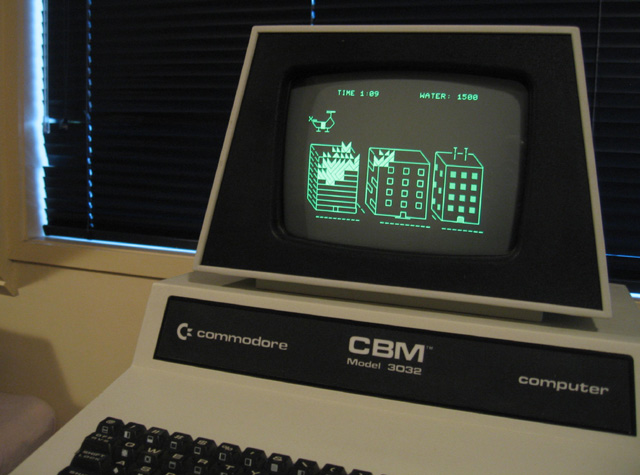tezza
Veteran Member
Thanks Andres,
I had a go last night at doing the PC ---> Pet transfer via cassette without much luck.
I saved the PET ROM dump/comparison program as a TAP file from VICE then used a utility called audiotap to convert this to a WAV I could output through the sound card to a conventional cassette recorder. After recording I'd transfer to a C-64 datasette attached to the PET and try loading.
No joy. Occasionally using certain volume levels the PET would "find" the file but the name would usually be garbled and no load would occur.
I suspect it's because my cheap and nasty MODERN cassette recorder (really a dictaphone) only has a MIC input and automatic levelling. Although the final tape sounds loud it probably has any peaks cut off.
Anyway, there are many ways to skin a cat with this one. Unfortunately, they are all with a blunt spoon! I need to solve the problem though, for along with wanting to do this ROM comparison, I want to get a library of tape software for the PET also.
I don't want to build any more hardware except as a last resort. So tonight I'll try one more TAP-->Wave converter (TAPClean) and if that doesn't work I'll look at..
Hooking up the 1541 C-64 drive via my X1541 series cable, booting opencmb and copying a D64 disk with the pet program(s) on it. I'll then use the C-64 as an intermediary, loading from disk and saving out the program(s) on cassette. I'll then load the programs in to the PET, applying the necessary m/l monitor hacks to get the PET to find the BASIC program location (which apparently would have loaded in to a location a C64 would expect..but one that is different for the PET). After recovering the program I'll then save it as a PET cassette file.
Whew! If this works, all should be sweet (maybe it IS faster to build a cable..lol).
If it doesn't work. Well...err. I'll cross that bridge when I come to it. I don't want to unpack my DOS machine if I can avoid it which means I've limited myself to Windows XP solutions at the moment. We'll see how they go.
Solving these problems is largely the fun of it all, isn't it? :D
Tez
I had a go last night at doing the PC ---> Pet transfer via cassette without much luck.
I saved the PET ROM dump/comparison program as a TAP file from VICE then used a utility called audiotap to convert this to a WAV I could output through the sound card to a conventional cassette recorder. After recording I'd transfer to a C-64 datasette attached to the PET and try loading.
No joy. Occasionally using certain volume levels the PET would "find" the file but the name would usually be garbled and no load would occur.
I suspect it's because my cheap and nasty MODERN cassette recorder (really a dictaphone) only has a MIC input and automatic levelling. Although the final tape sounds loud it probably has any peaks cut off.
Anyway, there are many ways to skin a cat with this one. Unfortunately, they are all with a blunt spoon! I need to solve the problem though, for along with wanting to do this ROM comparison, I want to get a library of tape software for the PET also.
I don't want to build any more hardware except as a last resort. So tonight I'll try one more TAP-->Wave converter (TAPClean) and if that doesn't work I'll look at..
Hooking up the 1541 C-64 drive via my X1541 series cable, booting opencmb and copying a D64 disk with the pet program(s) on it. I'll then use the C-64 as an intermediary, loading from disk and saving out the program(s) on cassette. I'll then load the programs in to the PET, applying the necessary m/l monitor hacks to get the PET to find the BASIC program location (which apparently would have loaded in to a location a C64 would expect..but one that is different for the PET). After recovering the program I'll then save it as a PET cassette file.
Whew! If this works, all should be sweet (maybe it IS faster to build a cable..lol).
If it doesn't work. Well...err. I'll cross that bridge when I come to it. I don't want to unpack my DOS machine if I can avoid it which means I've limited myself to Windows XP solutions at the moment. We'll see how they go.
Solving these problems is largely the fun of it all, isn't it? :D
Tez


